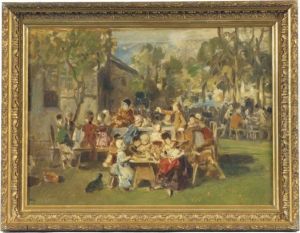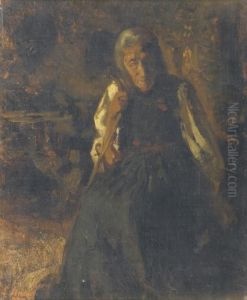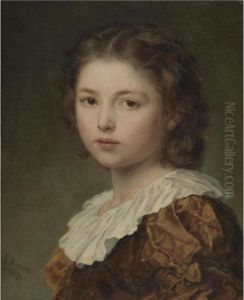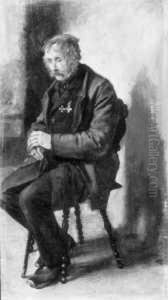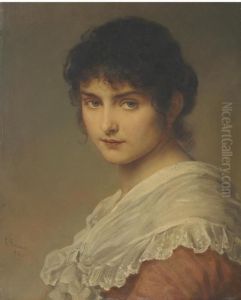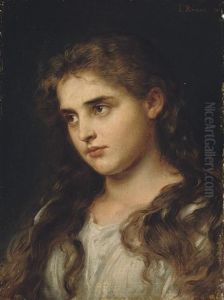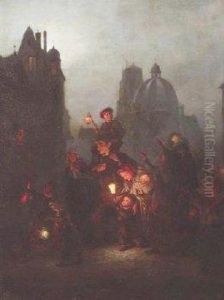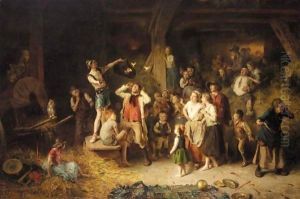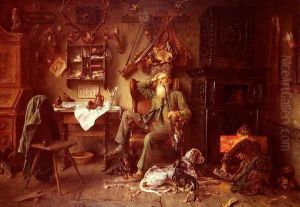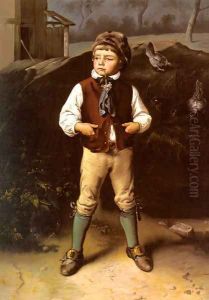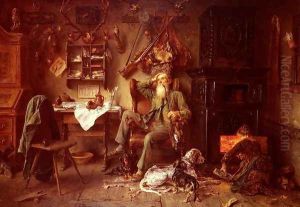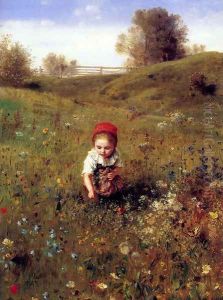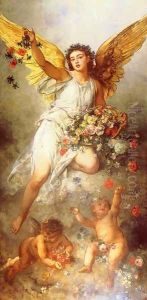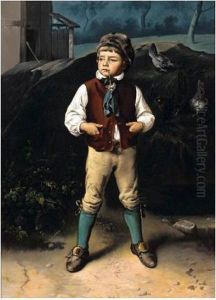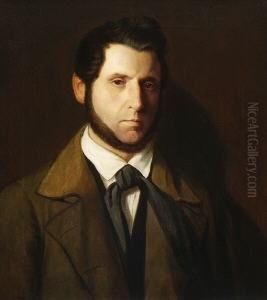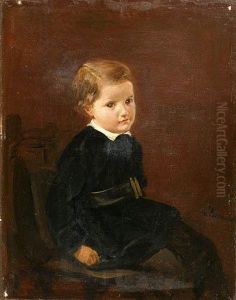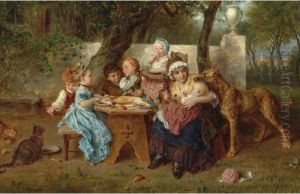Ludwig Knaus Paintings
Ludwig Knaus was a German painter, notable for his genre paintings and portraits which were widely popular in the 19th century. Born on October 5, 1829, in Wiesbaden, Germany, Knaus showed an early interest in art and quickly developed his skills under the tutelage of various teachers. He studied at the Düsseldorf Academy, a leading art school of the time, where he was influenced by the Düsseldorf school of painting, known for its meticulous detail and emphasis on narrative.
Knaus's work often depicted scenes of everyday life, capturing the customs and spirit of the rural populace with both humor and sympathy. His use of color and adept storytelling ability made his paintings resonate with a broad audience. In 1853, he moved to Paris, which was then the epicenter of the art world. There, he was exposed to new artistic movements and techniques that further refined his style. Knaus gained recognition at the Paris Salon, where he exhibited regularly and received numerous awards for his work.
Throughout his career, Ludwig Knaus remained a celebrated figure in both Germany and France. He was appointed a professor at the Berlin Academy in 1874 and later became the director of the Royal Gallery. His influence extended beyond his own work as he mentored the next generation of artists.
Ludwig Knaus passed away on December 7, 1910, in Berlin. His legacy is preserved in the many works held in museums and collections worldwide, and he is remembered as one of the leading figures of German genre painting in the 19th century.




